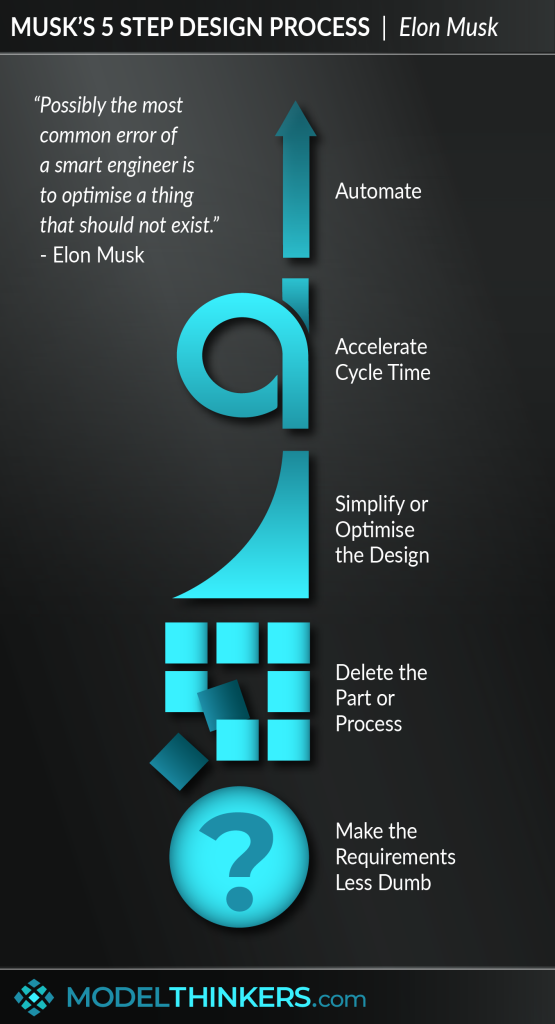The Effectiveness of Minimalism in Project Management: Simplifying Processes for Optimal Results

Understanding Minimalism in Project Management
The landscape of project management is continuously undergoing transformation, driven by the need for adaptability and excellence. One of the most compelling movements in this field is the embrace of minimalism. This approach champions the idea of reducing excess by eliminating the superfluous, thereby allowing team members to concentrate on what truly matters: their primary goals and objectives.
With most organizations inundated with numerous tasks, meetings, and lengthy reports, the need for a minimalist strategy has never been more pressing. By prioritizing essential elements, teams can significantly enhance their workflow. The following advantages are increasingly recognized in this context:
- Increased clarity: A minimalist approach clears away distractions. For instance, instead of hosting weekly lengthy meetings, teams might opt for brief daily check-ins focused solely on immediate tasks, allowing for clearer communication and better alignment with project goals.
- Enhanced efficiency: Streamlined processes often lead to quicker decision-making. For instance, organizations like Amazon have implemented decision-making frameworks that encourage teams to act swiftly without exhaustive discussions, which not only saves time but also maintains momentum.
- Reduced stress: A clutter-free workspace and simplified workflows can alleviate feelings of overwhelm. Google, known for its creative work environment, adopts a minimalist ethos by creating open spaces that promote collaboration and reduce stress among employees through less visual and cognitive clutter.
In a country such as the United States, where the complexities of projects can often lead to confusion and delays, organizations are increasingly seeking simplified processes. Notably, tech giants like Microsoft and Apple exemplify how adhering to minimalist principles can yield impressive outcomes. Microsoft’s shift towards a more minimalist software interface in products like Office 365 helped users focus on functionality without unnecessary distractions, ultimately enhancing user satisfaction.
This article will further investigate how the principles of minimalism can be effectively applied in project management. By examining real-world examples and practical implementations, we aim to provide insights into how teams might leverage this approach to maximize productivity and achieve optimal results. As organizations continue to navigate the fast-paced business environment, the adoption of minimalism may very well serve as a strategic advantage in the quest for efficiency and success.
DISCOVER MORE: Click here to learn about living simply

Embracing Minimalism: Key Principles for Project Success
The effectiveness of minimalism in project management lies not only in reducing clutter but also in establishing a framework that encourages teams to focus on high-impact activities. To harness the potential of this minimalist approach, project managers must adhere to several guiding principles that foster an environment of simplicity and efficiency.
One of the cornerstones of applying minimalism in project management is the prioritization of tasks. By identifying and zeroing in on the most critical activities, project teams can allocate their time and resources effectively. Using frameworks like the Eisenhower Matrix, which classifies tasks based on urgency and importance, teams are better equipped to navigate competing demands. For instance, a marketing team tasked with launching a new product can break down their initiatives into essential campaigns and postpone non-urgent activities, thereby maintaining clarity and focus.
Another significant principle is elimination of unnecessary processes. In many organizations, teams find themselves bogged down by redundant protocols that stymie progress. By scrutinizing every step in a project’s lifecycle, managers can identify and remove inefficiencies. For example, a software development team could streamline its code review process, opting for succinct peer reviews rather than extended sessions, which can often lead to system delays without adding substantial value. Not only does this reduce bottlenecks, but it also enhances software delivery speed, an essential factor for staying competitive in today’s fast-paced tech landscape.
Effective communication is another area where minimalism can shine. Teams often suffer from communication overload, where excessive emails and meetings dilute the focus on core objectives. Adopting a minimalist communication strategy—such as utilizing collaborative platforms like Slack or Asana—can lead to more streamlined dialogues. By establishing guidelines for what constitutes essential communication, teams can enhance engagement and transparency without overwhelming members with non-essential updates.
- Focus on Core Objectives: Highlighting essential goals can keep the team’s direction aligned with project outcomes.
- Use of Technology: Leveraging project management tools can automate repetitive tasks, freeing up time for strategic planning.
- Continuous Feedback: Regular, concise feedback loops can improve performance while avoiding long delays typical of extensive review processes.
Furthermore, the aspect of adaptability plays a crucial role in minimalism. As projects evolve, flexibility allows teams to pivot quickly without being hindered by rigid structures. Agile methodologies, popular among tech companies like Spotify and Trello, embody this principle by encouraging iterative progress through incremental changes. The ability to respond to feedback and adapt project strategies ensures that teams remain aligned with both stakeholder expectations and market dynamics.
As teams in the United States increasingly embrace minimalism, they are setting the stage for more fruitful collaborations and streamlined outcomes. In the following sections, we will delve deeper into practical applications of these principles along with real-world case studies that demonstrate the success of minimalism in driving project efficiency and optimizing results.
The Role of Minimalism in Enhancing Productivity
Minimalism in project management is not just a trend; it is a strategic approach that profoundly impacts productivity. By embracing minimalist principles, organizations can eliminate the clutter of unnecessary tasks and focus on core objectives. This streamlining process allows teams to prioritize what truly matters, enabling a clear vision and efficient execution.One of the key advantages of minimalism is its ability to reduce cognitive overload. In today’s fast-paced work environments, team members often juggle multiple tasks that can lead to stress and confusion. A minimalist approach encourages simplification, helping team members to maintain clarity about their roles and responsibilities. This not only enhances individual performance but also fosters a culture of accountability within the team.Moreover, minimalism can significantly reduce the time and resources spent on projects. By identifying and eliminating non-essential elements, teams can streamline workflows and increase efficiency. Studies show that projects adhering to minimalist principles often experience shorter timelines and lower costs, allowing organizations to maximize their return on investment.As we delve deeper into the effectiveness of minimalism, it’s important to explore how these principles can be practically applied. Project managers can begin by implementing techniques such as prioritizing tasks using the Eisenhower Matrix, which helps differentiate between what is urgent and important. Creating a “minimal viable product” (MVP) can also help teams to launch quickly and gather feedback without over-investing in features that may not resonate with stakeholders.Furthermore, fostering open communication within teams enhances the minimalist ethos. Regular check-ins and updates simplify collaboration and ensure that everyone is aligned with the project goals. This also allows for timely feedback, which is crucial in making adjustments and eliminating unnecessary processes.In conclusion, the effectiveness of minimalism in project management extends beyond simple aesthetics; it is a powerful tool that drives optimal results through increased focus, efficient resource utilization, and enhanced productivity. As organizations continue to refine their project management practices, embracing minimalism offers a pathway to achieve not only better outcomes but also a healthier work environment.
DIVE DEEPER: Click here to discover the beauty of simplicity
Streamlining Collaboration: The Power of Minimalism in Team Dynamics
As project management continues to evolve, the embrace of minimalism opens doors to more efficient ways of working collaboratively. One effective strategy is the creation of cross-functional teams. By bringing together individuals from different expertise areas, organizations can foster diverse perspectives while minimizing redundancies in communication and decision-making. This synergy is particularly essential in industries where rapid changes are the norm, such as IT and product development. For instance, a tech startup could form a cross-functional team comprising developers, designers, and marketers to expedite product cycles, ensuring that every member contributes their unique skill set toward a common goal.
Moreover, task delegation plays a pivotal role in enhancing project outcomes through minimalism. When project managers delegate tasks based on team members’ strengths, not only does it eliminate micromanagement, but it also allows for individual accountability. Microtasking—breaking down large projects into smaller, manageable tasks—can amplify productivity and reduce feelings of overwhelm among team members. For example, a construction project might employ microtasking by assigning different teams to focus on specific areas (framing, electrical, plumbing) rather than having one team tackle the entire project simultaneously. This focused delegation leads to faster completion times and higher-quality results.
Visual management is another compelling element of minimalist project management. Tools like Kanban boards or Gantt charts help visualize the progress of a project, allowing teams to track status without endless email threads or lengthy meetings. These visual aids condense crucial information into digestible formats, ensuring that all team members are aligned with the current state of the project. In manufacturing, for instance, Toyota has long been hailed for its use of visual management as part of the Lean methodology, successfully maintaining efficiency and reducing waste in its production processes.
Additionally, embracing a culture of continuous improvement aligns perfectly with minimalist principles. Regularly assessing processes and outcomes allows teams to identify areas for optimization without becoming overwhelmed by excess data or analysis paralysis. Techniques such as the Plan-Do-Check-Act (PDCA) cycle enable teams to iteratively refine their approaches. For example, a marketing team could analyze campaign performance data bi-weekly, testing small adjustments to messaging and delivery methods, which can lead to more significant overall impacts while keeping operations streamlined.
- Fostering Openness: A minimalism-focused culture encourages open dialogue, resulting in a shared understanding among team members.
- Data-Driven Decisions: Less emphasis on excess data allows teams to focus on key metrics that truly influence project outcomes.
- Alignment of Goals: Minimalist practices help ensure that team objectives remain coherent and aligned with organizational goals.
The implementation of these minimalist strategies not only cultivates a more productive environment but also enhances overall morale within teams. When team members feel empowered to prioritize their work and contribute meaningfully, it leads to greater satisfaction and commitment to the project. As organizations across the United States recognize the merits of this innovative approach, the synergy between minimalism and effective project management continues to gain traction, ultimately paving the way for optimized results and successful project delivery.
DISCOVER MORE: Click here to learn how to enhance your clarity and focus
Conclusion: Embracing Minimalism for Future-Ready Project Management
In the rapidly changing landscape of project management, minimalism emerges as a powerful ally, effectively streamlining processes and enhancing team performance. By prioritizing simplicity and clarity over complexity, organizations can reduce unnecessary distractions, allowing project teams to focus on what truly matters: delivering exceptional results. The strategies outlined—from cross-functional team synergy and task delegation to visual management and continuous improvement—illustrate how adopting minimalist principles can significantly transform project dynamics.
Interestingly, embracing such a culture not only boosts productivity but also fosters a sense of ownership among team members. When individuals are empowered to make meaningful contributions without the weight of excessive tasks or data, their engagement and satisfaction tend to soar. With remote work on the rise, the application of minimalist techniques becomes even more crucial; it offers a framework that enhances collaboration across distances and time zones.
Organizations looking to thrive in the competitive landscape of the United States must consider minimalism as a pivotal approach in project management. By reducing clutter and chaos, they will not only meet but exceed expectations in project execution. With a sustained focus on simplifying processes and aligning goals, businesses can position themselves as leaders in efficiency and innovation. As we move forward, the effectiveness of minimalism in project management is not just a trend; it is a necessary evolution that promises optimal results and a brighter future for teams across industries.


